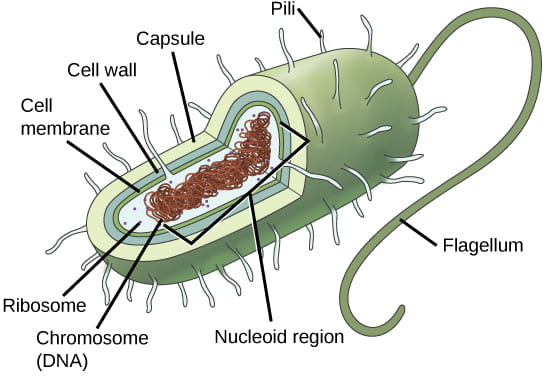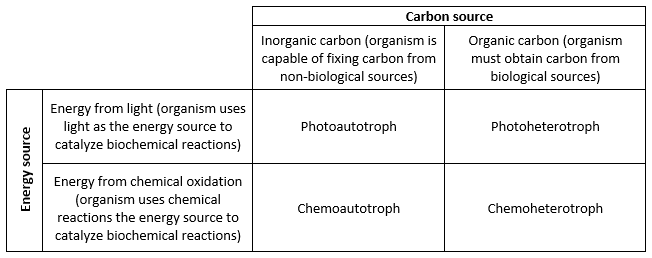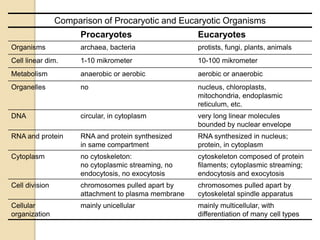2005a and pectin Sorokin et al. The 20000 bp segment is a recent acquisition via horizontal gene transfer.

What Is The Difference Between Rooted And Unrooted Phylogenetic Tree Pediaa Com Phylogenetic Tree Prokaryotes Biology
B are unable to metabolize the glucose or fructose and thus starve to death.

. Archaea belong to the domain Archaea and are single-celled prokaryotic organisms that do not have membrane-bound organelles and are distinct from both bacteria and eukaryotes. The genera Halobacillus Marinococcus Salinicoccus Nesterenkonia and Tetragenococcus. The aerobic halophilic Archaea of the family Halobacteriaceae are the halophiles par excellence.
However there are exceptions. The possible existence of unseen microbial life was suspected from ancient times such as in Jain scriptures from sixth century BC India. Archaea domain Archaea any of a group of single-celled prokaryotic organisms that is organisms whose cells lack a defined nucleus that have distinct molecular characteristics separating them from bacteria the other more prominent group of prokaryotes as well as from eukaryotes organisms including plants and animals whose cells contain a defined nucleus.
D are unable to swim through these thick and viscous materials. The gram-positive moderately halophilic aerobic bacteria with the exception of two Bacillus species belong to genera that include only species with halophilic requirements. The scientific study of microorganisms began with their observation under the microscope in the 1670s by Anton van.
Until the advent of sophisticated genetic and molecular biology studies allowed scientists to see the major biochemical differences between archaebacteria and normal. They are in particular endosymbionts or parasites of eukaryotes many of them belonging to the phyla Mollicutes Chlamydiales and Rickettsiales respectively. 15 40 C.
The accumulation of evidence for the existence and importance of mesophilic archaea in ammonia oxidation has had a significant impact on the contemporary view of nitrification Francis et al 2007Since the isolation of autotrophic prokaryotes in the late 19th century it has been assumed that all autotrophic ammonia oxidizers are bacteria. Examples of A hyperthermophilic B anaerobic and C extremely halophilic archaea. Genome size and number of reciprocal best hits fit using non-linear regression.
While inspecting the genome sequence of your newly discovered organism you note that while the genome overall is 50 G C there is a cluster of genes comprising about 20000 bp that is 64 G C. 2012d with many examples fermenting sugars and amino acids to end products such as acetate formate lactate and H 2. A microorganism or microbe is an organism of microscopic size which may exist in its single-celled form or as a colony of cells.
Archaea ɑːr ˈ k iː ə ar-KEE-ə. Over 60 different species of aerobic and anaerobic thermophilic bacteria are covered. Singular archaeon ɑːr ˈ k iː ə n constitute a domain of single-celled organismsThese microorganisms lack cell nuclei and are therefore prokaryotesArchaea were initially classified as bacteria receiving the name archaebacteria in the Archaebacteria kingdom but this term has fallen out of use.
C are obligate anaerobes. Up to 10 cash back Methanogenic archaea are among the most common prokaryotes on the surface of the earth 1 2They play a critical role in producing methane from hydrogen in the environment animals and humans Currently however they can only be cultured in laboratories with very specific equipment Indeed the anaerobic method based on Hungate. For instance bacterial species involved in biodegradation ie digestion and decomposition of organic matter which are more active in temperatures ranging from approximately 70 - 90 F approx.
The third domain of life the Archaea continues to expand as new lineages are characterized by genome analysis and cultivation 1The majority of archaeal lineages show anaerobic metabolisms such. Isolation growth methods characterization and identification ecology metabolism and enzymology of thermophilic. They are the main component of the microbial biomass in environments such as the Dead Sea hypersaline soda lakes saltern crystallizer ponds and potash mines.
Archaebacteria are a type of single- cell organism which are so different from other modern life-forms that they have challenged the way scientists classify life. Thermophilic Bacteria is a comprehensive volume that describes all major bacterial groups that can grow above 60-65C excluding the Archaea. They are single-celled organisms that comprise cells with distinct properties that make them unique from the other two domains of life namely Eukaryota and Bacteria.
The number of shared genes between archaea and bacteria were fitted using non-linear regression black lines and 196 standard deviations from than the mean were calculated for. Archaeal cells have unique properties. The best explanation for this is _______.
This is because bacteria that encounter such an environment ____. Epulopiscium fishelsoni is a bacillus-shaped bacterium that is typically 80 µm in diameter and 200-600 µm long. Environmental risk factors examples.
2012a cellulose Zhilina et al. Again like the aerobic types the anaerobic isolates are in general biochemically reactive fermenting a range of polymers such as chitin Sorokin et al. How do archaea.
For example most bacteria tend to be on the order of 02 to 10 µm micrometers in diameter and 1-10 µm in length. Mesophiles are microorganisms such as some species of Bacteria Fungi and even some Archaea that are best active at median temperatures. A undergo death as a result of water loss from the cell.
They use numerous source of energy and display a diverse array of chemical reactions in metabolism. Acidophilic archaea thrive in anaerobic and aerobic low pH environments pH 5 rich in dissolved heavy metals that exacerbate stress caused by the production of reactive oxygen species ROS such as hydrogen peroxide H 2 O 2 hydroxyl radical OH and superoxide O 2 ROS react with lipids proteins and nucleic acids causing oxidative stress and damage that. Currently there are more than 200 bacteria and Archaea respectively described as Candidatus.
Both bacteria and archaea are generally small compared to typical eukaryotes.

Prokaryotes Bacteria Archaea Organismal Biology

Prokaryotes Bacteria Archaea Organismal Biology

Archaea Bacteria Similarities Differences Video Lesson Transcript Study Com

0 Comments